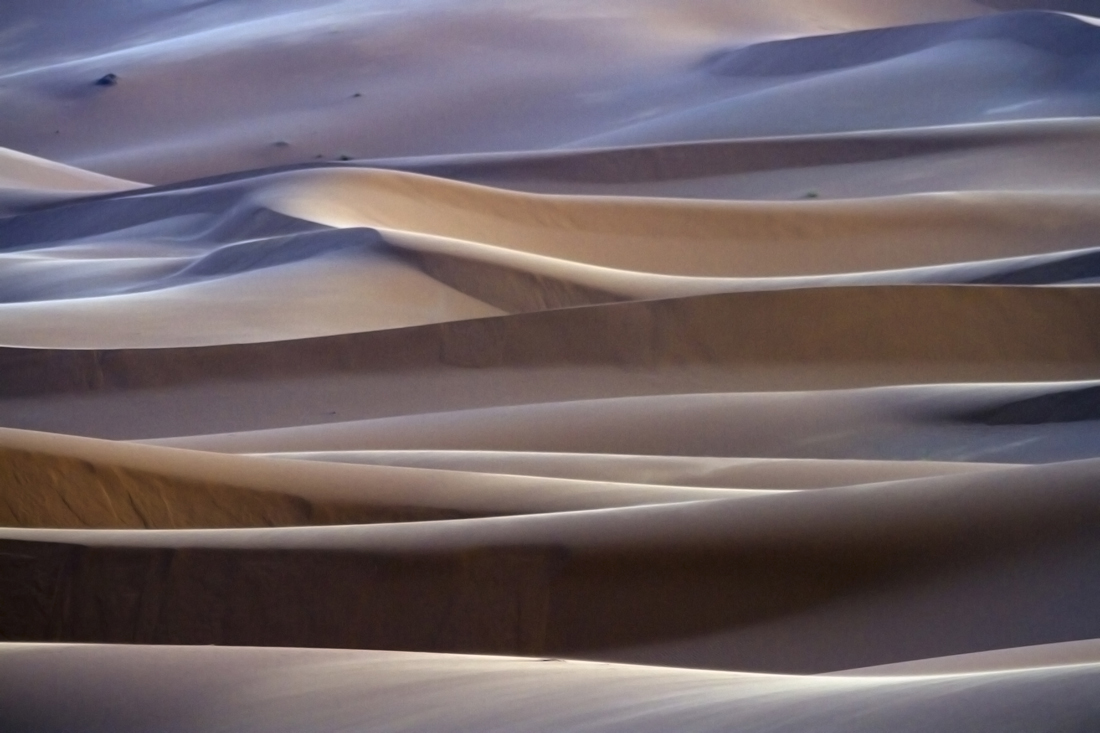
A silent sunrise at Erg Chebbi, a vast sea of dunes located on the edge of the Sahara desert. During the warmest part of the year, Moroccans come to Erg Chebbi to be buried neck-deep in the hot sand for a few minutes at a time. This is considered to be a treatment for rheumatism.The Sahara covers large parts of Algeria, Chad, Egypt, Libya, Mali, Mauritania, Morocco, Niger, Western Sahara, Sudan and Tunisia. It covers 9 million square kilometres (3,500,000 sq mi), amounting to 31% of Africa.
Human habitation is known to have existed for many thousands of years with people living on the edge of the desert during the last ice age. The Sahara was then a much wetter place than it is today. Over 30,000 petroglyphs of river animals such as crocodiles survive, with half found in the Tassili n’Ajjer in southeast Algeria. Fossils of dinosaurs, including Afrovenator, Jobaria and Ouranosaurus, have also been found here. The modern Sahara, though, is not lush in vegetation, except in the Nile Valley, at a few oases, and in the northern highlands, where Mediterranean plants such as the olive tree are found to grow. It was long believed that the region had been this way since about 1600 BCE, after shifts in the Earth’s axis increased temperatures and decreased precipitation, which led to the abrupt desertification of North Africa about 5,400 years ago. However, this theory has recently been called into dispute, when samples taken from several 7 million year old sand deposits led scientists to reconsider the timeline for desertification.



